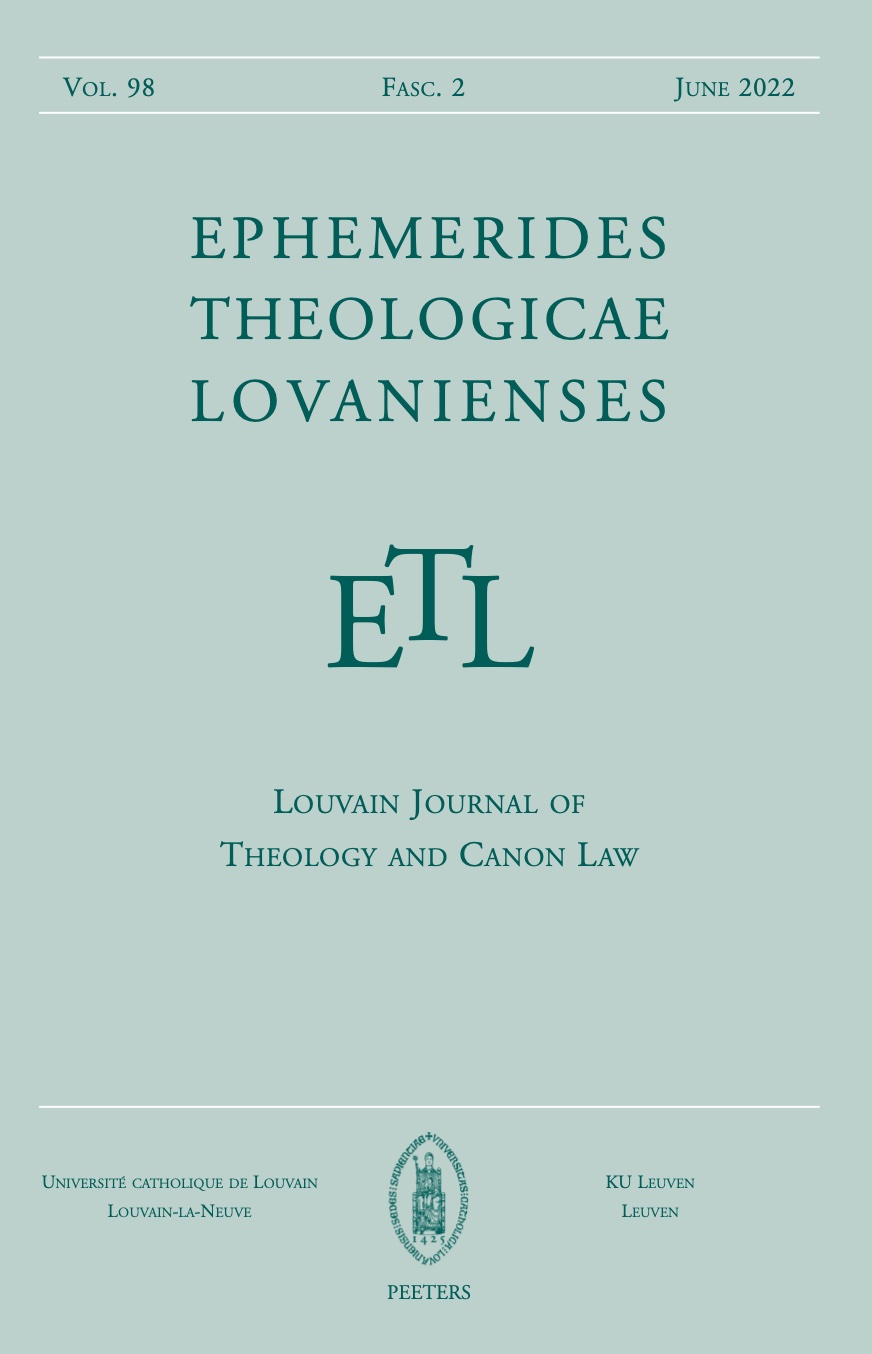 previous article in this issue previous article in this issue | next article in this issue  |

Preview first page |
Document Details : Title: Jesus' Temptations as a Flashforward in the Plot of Q Subtitle: A Response to Daniel A. Smith Author(s): FLEDDERMANN, Harry T. Journal: Ephemerides Theologicae Lovanienses Volume: 94 Issue: 1 Date: 2018 Pages: 115-150 DOI: 10.2143/ETL.94.1.3281489 Abstract : This article continues a debate over the form of Jesus’ vindication in Q, responding to an article of Daniel A. Smith in which he renews his defense of an assumption as the form of Jesus’ vindication. The evidence Smith brings forward, a series of five motifs, does not point unambiguously to an assumption over a resurrection. Instead, I argue that Jesus’ Temptations functions as a flashforward or prolepse of Jesus’ death and resurrection. Jesus’ first and third temptations show Jesus engaging the basic human temptation to bread which amounts to humans’ centering their lives on their pressing bodily, physical needs to shield themselves from the contingency that threatens human life at every turn. The bread temptation, which Israel succumbed to over and over again, really amounts to worship of the world and ultimately the Self instead of God. Jesus resists these temptations insisting that a human being does not live by bread alone (Q 4,4) but by God alone (Q 4,8). In the central second temptation the devil, appealing to God’s care for those faithful to him, suggests that Jesus invoke his privilege as Son of God to shield himself death, the ultimate working out of the contingency of human existence. Jesus turns back the temptation, refusing to tempt God. At this point the reader infers that God will respond with power and love to raise his Son from the dead – the Easter event. |
|


